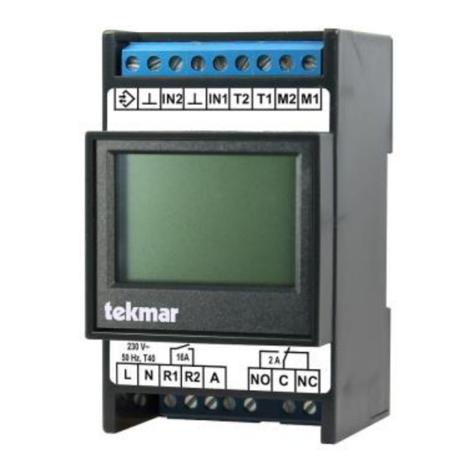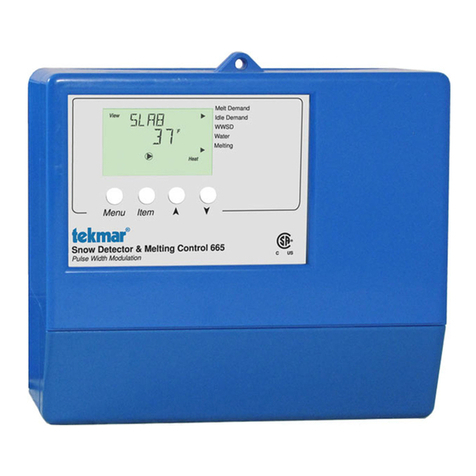4
Overview
Tekmar ice detection systems use their combi sen-
sors to measure temperature and moisture in
heated outdoor areas such as open spaces, roofs
and gutters. This means that they operate in a par-
ticularly energy-efficient way, since the heating is
only switched on when it is cold or if there is water,
ice or snow.
The 73 ice detection system is an all-round system
wherever it is necessary to keep an area free of ice
and snow: It is flexible, maintenance-free and inex-
pensive. It can be modularly extended to form a
multi-channel system and can be used in a cloud
environment or in building management systems.
All system 73 control devices are easy to install and
commission. They are characterised by intelligent
factory settings and a straightforward commission-
ing function. The sensors and the control units can
be freely combined so that the system can be opti-
mally adapted to the operating conditions. All con-
trol units are designed for one combi sensor and
one heating circuit.
Ice and Snow Detector 1873-ESM
The Ice and Snow Detector 1873 is a single-
channel device that can be used for all applications
in the field of ice and snow detection.
It is operated and adjusted via an illuminated touch
graphic display, which is also used to set the para-
meters of all the other devices in a system. A three-
level password protection is available for the multi-
lingual menu.
A comprehensive alarm management checks both
the internal device functions and those of the con-
nected sensors. Furthermore, the function of the
heating relay and a downstream contactor can be
monitored.
Sensors
The System 73 sensors use a measuring principle
based on the thermal capacity of the sensor surface
and the water on it, possibly in the form of ice or
snow. This measuring principle was developed by
tekmar and has already proven itself over many
years. Only one sensor is required to measure
moisture and temperature, making installation very
simple and cost-effective.
System 73 offers two types of sensors: The 3356
sensor is ideally suited for installation in open
spaces such as roads, walkways or staircases. The
3354 sensor can be mounted, for example, in
gutters and on roof surfaces thanks to its design































